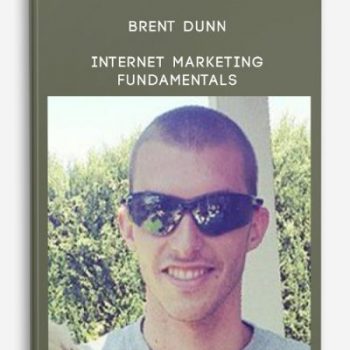
Entheos Academy – Neurosculpting with Lisa Wimberger
Description
Entheos Academy – Neil Fiore – How to Go from Worry to Wonder [WebRip – 1 MP4]
The Go from Worry to Wonder process will show you how to access more of your brain and body’s deeper wisdom, lessen conscious-mind struggle and worry, and create inner safety.
Introduction
Worrying is your mind’s way of warning you of possible danger and of pleading with you to create a plan for physical and emotional survival. Your mind may also worry that you will make yourself miserable if things don’t go your way in the future. If you are chronically worried, stressed, and anxious you most likely are not acknowledging the threat, are not making plans for how to cope, and are threatening to “beat yourself up” if things go wrong.
Going from Worry to Wonder will put you in the role of an effective leader who confronts problems, develops solutions to reduce stress, enhances recovery from medical procedures, and performs optimally on exams, in sports, and for presentations. The Go from Worry to Wonder process will show you how to access more of your brain and body’s deeper wisdom, lessen conscious-mind struggle and worry, and create inner safety.
The Top 10 Big Ideas
1 Appreciate the Positive Function of Worrying Worrying is your brain’s way of asking: What’s your plan for survival? How many times do I have to wake you up at 3 am before you start making a plan? How upset will you be if something bad happens? Your worrying mind needs: 1. To be heard and validated for its feelings regardless of how irrational they may seem; 2. Answers to the “what if” questions with “this is what I’ll do if”; 3. Leadership and direction to focus your energy on solutions; and 4. A Guarantee that you will not hate yourself if you don’t get what you want.
2 Why Saying “It’s Okay” Doesn’t Work for Your Worrying Mind or for a Scared Child Ignoring your worrying mind’s questions or dismissing them with “It’s okay” will only make it more insistent. “It’s okay” only adds insult—in the form of denying a painful feeling—to insult, the fear and worry. Your worrying, fearful part doesn’t feel okay. It’s scared and wants validation and a realistic plan. Though it may seem counter-intuitive, empathize with and validate the painful feeling as you might with a frightened child or patient: “That’s awful. You’re scared. It hurts. And you want it to stop hurting.” By the time you offer the second or third validating phrase the child or patient feels connected to someone who understands rather than feeling alone and blamed for being scared.
3 Use Plans to Calm Your Worrying Mind A plan communicates to lower brains: “The leader (human brain executive function) has shown up. You are not alone and not responsible for my life. I am taking responsibility for this plan.” Planning also creates neural pathways that prepare you to take corrective action “if something negative happens.” Plans are a form of Mental Rehearsal for a performance in which you anticipate what could go wrong (and your default reactions) so you are prepared to stay on track. Plans also communicate to your Worrying Mind that you are paying attention to its concerns and are stepping up to take action, allowing this survival function to turn down the volume on its screaming.
4 Schedule a Time to Do “Quality Worrying” Instead of worrying every hour, all day long, schedule a time to do some quality worrying. Set aside a few minutes at a specific time to answer all the “what if” questions with a plan that says “This is what I’ll do if that happens.” Instead of trying to ignore potential problems, do a mental rehearsal of how to face and deal with your worst fears and most persistent worries. Setting a time for “quality worrying” shuts off worrying during the day and allows you time to focus and develop effective plans.
5 Creating the Perfect Plan to Stop Worry and Shift to Wonder The ultimate or overarching plan guarantees: “Regardless of what happens, your worth is safe with me. I will not make you feel bad. I will not turn against you just because something went wrong.” Your perfect plan for survival maintains a solid sense of worth regardless of what happens. It answers the “what if” questions with “even if the worst happens; even if they turn against you, I’m on your side; I will not make you feel bad.” What is your plan for making yourself safe with you? How many worries would disappear if you could guarantee that—regardless of what happens—you would forgive yourself and accept yourself? Remember that accepting yourself as a human being, who cannot control everything, is the ultimate plan that integrates and quiets your worrying mind.
6 Go from Worry to Wonder in One Breath Release worry, anxiety, and frustration in five seconds by taking a deep breath and exhaling as you give that energy to your body to work on the troubling issue. When you notice that you’re worrying, you might also notice that you’re tightening muscles in your forehead or jaw. This means you’re working with just your consciously controlled muscles and the relatively small part of your brain. To release this tension and worry, tighten your muscles further and include your fists and biceps as you inhale and hold your breath for a few seconds. Then release your muscles and your worry with a big exhalation to increase oxygen and blood supply to your body and to shift to wondering about what your body and your genius brain can do with the extra energy you just released. If the worry returns, hold it for just five seconds—that’s one breath—before tensing and releasing it to wonder.
7 Say “This Will Be Interesting” to Evoke a Creative Solution When you find yourself struggling over an issue you cannot control, release your muscle tension and say to yourself: “This will be interesting,” or “I need to sleep on it,” or “It will come to me.” These common phrases communicate that you are going beyond your conscious mind struggles and worries and are asking for a solution from your larger brain and subconscious genius. It also communicates “You as a conscious identity are not alone.” When the conscious you goes to sleep your larger brain and autonomic nervous system continue to work for you, and your subconscious mind gets to dream up creative solutions. This is how you go from not-knowing to knowing and from struggle to flowing in the Zone.
8 Ask Yourself, “What Can I Do Now?” Much of our worrying is about trying to control anticipated future events. When your “time-traveling mind” tries to control the future, your body tries to follow and you have anxiety, or “stuck energy.” You are literally, “beside yourself” with energy that can’t be released or used constructively. To become optimally effective, use your symptoms of worry and tension to remind you to quickly shift your focus to what you can do now, in the present. Say: “What can I do now?” It is only now, in the present moment, that you can do something to possibly avoid future danger or to develop plans to cope with it. Now is the only time you can be productive and effective. When you focus your mind in the present on what to do now, you are bringing your mind in from the imaginary future to be with your body without any anxiety, and you are performing optimally. I call this “applied mindfulness.”
9 Hold a Committee Meeting Call all your worrying thoughts to a meeting in which you finally show up as the chairperson. Invite all their “what if” and “yes, but” questions. No holding back. Honor each worry with a “Yes that would be awful. Here’s what we’ll do if that happens.” Offer a realistic—not a falsely positive—mental rehearsal of what you’d experience, how you’d react, who you’d call for help, what you’d do, and how you’d feel after confronting the negative event or loss. You as an adult with an evolved human brain have knowledge and skills that were not available to you when childhood worries were formed or when lower brains held onto primitive methods of survival. You, in the current world environment, with your advanced tools, can override old, outdated fears and limited ways of coping. You as the chairperson can accept responsibility for your decision to put aside old fears in favor of bold actions that have a greater promise of success in today’s world. Remind yourself and your committee that you will forgive yourself for being vulnerable to loss and disappointment; then reassert your commitment to accepting yourself (and all parts of you) as a normal human being.
10 Expecting a Surprise; Amaze Your Boss, Your Parents, and Your Doctor When you practice going from worry to wonder you begin to relax when you don’t know the answer because you now expect that soon something will come to you from your larger brain. One of the reasons we love puzzles, Sudoku, and mysteries is because our conscious mind doesn’t know the answer immediately, but slowly—and sometimes, all at once—the answer reveals itself. We return to that time (around the age of four or five) before our brain split into specialized left and right-brain functions with a separated, bounded sense of self. When asked, “How did you do that?” at age four you probably answered with a shrug and “I don’t know it just comes to me. It’s easy.” And it is easy for the child that shows up expecting to join with his or her inner genius. There’s something magical about positive expectancy that tells your mind, “I’m getting out the way so you can work on this for me. I expect a solution tonight in my dreams or tomorrow morning when I, the conscious part of me, wakes up.” I’ve seen going from worry to wonder work its magic for people facing surgery—healing so fast they amaze their doctors, taking exams they’ve flunked five times and passing easily on the sixth try, and with finding creative solutions to seemingly unsolvable problems. Practice rapidly shifting from trying to control what’s going to happen in the future to being comfortable wondering what interesting solutions and surprises soon will occur to you. Tell your worrying mind “You haven’t the foggiest idea how we’ll get through this one, so it’s going to be interesting. This is going to be a surprise to my conscious mind.”
Preview Information:
Original Page
Archive Page
Entheos Academy – Neurosculpting with Lisa Wimberger Available now at Coursecui.com
Entheos Academy – Neurosculpting with Lisa Wimberger Download, Entheos Academy – Neurosculpting with Lisa Wimberger Available Now, Entheos Academy – Neurosculpting with Lisa Wimberger Order, Entheos Academy – Neurosculpting with Lisa Wimberger Reviews, Entheos Academy – Neurosculpting with Lisa Wimberger Torrent, Entheos Academy – Neurosculpting with Lisa Wimberger Course Download, Entheos Academy – Neurosculpting with Lisa Wimberger ClubBuy, Entheos Academy – Neurosculpting with Lisa Wimberger Groupbuy
More Course:EVERYTHING ELSE
Outstanding Course:The Language of Data Executive Briefing













Lord –
This is Digital Download service, the course is available at Coursecui.com and Email download delivery.